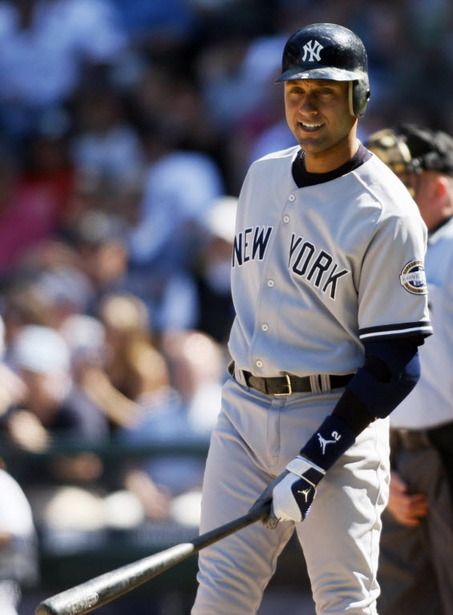The Toronto Blue Jays have dropped the ball
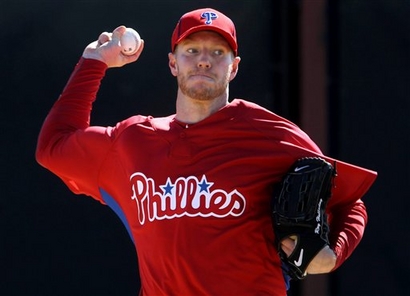 This week is one of those stretches where everything seems to be going on at once in the world of sports.
This week is one of those stretches where everything seems to be going on at once in the world of sports.
Playoffs in the National Basketball Association and the National Hockey League, the world hockey championship and the announcement of World Cup rosters have all garnered headlines in sports sections across the country.
But one piece of news was sure to rankle Canadian sports fans more than the rest – Roy Halladay’s return to the Rogers Centre in late June has been relocated to Philadelphia.
The series was supposed to be a homecoming for the former Jay who is now anchoring the Phillies' rotation.
However, because of a security perimeter set up around the Metro Toronto Convention Centre for the G-20 Summit, Halladay won’t be returning to his old stomping grounds until at least 2011. That is when the Jays and Phillies will next face each other in inter-league play.
Although this year’s series will now be held in Citizens Bank Park, the Blue Jays will still be the home team of record, with the American League’s designated hitter rule in effect and Toronto still getting to hit at the bottom of the inning.
“We would have been bringing people down into an area where people aren’t being asked to come to,” said Blue Jays president and chief operating officer Paul Beeston.
Although safety concerns should be a primary concern of the Toronto franchise’s front office, they could have handled this situation better.
After all, American League rules won’t protect the Blue Jays from Philadelphia’s notoriously obnoxious hecklers. Having the last at bats of the game won’t mitigate the fatigue of travel. It really isn’t an ideal alternative.
The Phillies will also be seeing some kind of profit margin from this change of scenery. Although Beeston insists the endeavour will probably be revenue neutral, I find it hard to believe that the Jays wouldn’t have benefited from a temporary boost in attendance figures.
It would also have been cathartic for a beleaguered Toronto fan base that is still reeling from the loss of Halladay, arguably the greatest player in franchise history.
A better idea would’ve been to put the series at PNC Park, home of the Pittsburgh Pirates. It would still be some distance for Toronto fans to travel, but it would also have been a long drive for the Phillies and their supporters.
Pirates fans would be just as likely to root against their Pennsylvanian rivals as they would be to boo the Blue Jays, so it would eliminate Philadelphia’s home-field fan advantage.
Another logical choice would have been Coca Cola Field, home of the Triple-A Buffalo Bisons. Even closer to Toronto than Pittsburgh, the park has a capacity of 18,025. That’s not up to Major League Baseball’s usual standards, but it would definitely be big enough to hold Toronto’s average crowd of 15,207.
Again, the New York state crowd would be just as apt to heckle the Phillies as they would the Blue Jays.
The move to Philadelphia’s Citizens Bank Park is yet another failure by the Toronto Blue Jays front office to show any kind of respect for its fan base. They could have done better. Done more than just shrug and brush off any concerns at a press conference.
Moving from the Rogers Centre for the duration of the G-20 summit was necessary, but it seems like they put little thought into viable alternatives. Beeston and company have mishandled the situation and done their supporters a disservice.
You’re bringing me down, ARod
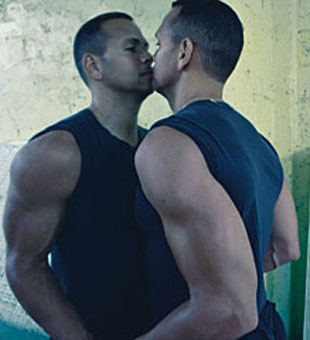
This photo of Alex Rodriguez has nothing to do with Thursday's game against the Oakland Athletics. It's just funny.
Yesterday I tried to be sunny and say three nice things about Major League Baseball. It took less than 24 hours for Alex Rodriguez to bring me back down with his bush league play.
In case you missed it, Yahoo Sports’ Big League Stew summed it up well:
“In the sixth inning of the A's 4-2 victory, Rodriguez went from first to third on a foul ball by Robinson Cano. His trip back to first took him right over the pitcher's mound, an unspoken no-no that ticked [starting pitcher Dallas] Braden off right away.
After a double play ended the inning, the 26-year-old pitcher immediately started yelling at A-Rod — watch it here — who claimed he didn't know he had done anything wrong.”
This isn’t the first time that ARod has broken one of baseball’s unwritten codes. We’ll ignore his admitted steroid use and focus on his transgressions against the game’s etiquette.
My first exposure to Rodriguez’s classless brand of play was during the infamous 2004 American League Championship Series with his New York Yankees leading the series against the Boston Red Sox 3-0. On a routine groundout to the pitcher ARod decided to chop the ball out of Bronson Arroyo’s hand. After some deliberation the umpires ruled him out.
It became a turning point in the series with the Red Sox rallying to an improbable seven-game series victory.
Three seasons later, Rodriguez got into the same kind of shenanigans at Toronto’s Rogers Centre. During an infield fly Rodriguez, circling rounding third, yelled right behind the rookie infielder who had called for the ball. Believing that he was being called off by another Blue Jay, the fielder let the ball fall harmlessly to the ground, allowing the Yankees to score.
Asked about the incident, ARod claimed that he had only yelled in celebration.
My problem with ARod isn’t so much what he does, but how he handles the ensuing criticism. He refuses to accept responsibility.
I don’t mind there being a heel in baseball. In fact, I think it’s one of the best things about Barry Bonds’ entire career. I didn’t like the former Giants slugger, but I could at least admire his willingness to be the villain.
Instead, of Bonds’ unique sense of personal responsibility, we get Rodriguez saying this in reaction to Braden’s blow-up: “He just told me to get off his mound. I was a little surprised. I'd never quite heard that. Especially from a guy that has a handful of wins in his career ... I thought it was pretty funny actually.”
I see ARod’s flaunting of baseball’s social conventions as something akin to taking a run at a goaltender in hockey or flagrantly fouling a star player in basketball. You can do it, but don’t act surprised when they’re upset.
Don’t dismiss their complaints because you have a higher batting average or get more lucrative endorsement deals. Appreciate that if you lack respect for your opponents they’re going to disrespect you. Expect some sort of retribution and take your lumps.
Tempest in a tea pot: thoughts on the Joe Cowley controversy
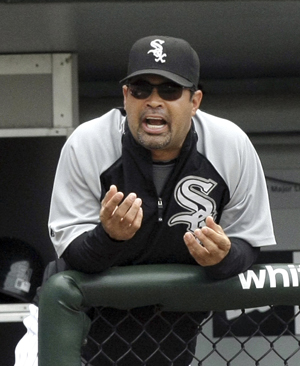
Chicago White Sox manager Ozzie Guillen was the voice of reason in the Joe Cowley controversy? Weird.
Last Thursday the Toronto sports blogosphere was aflame with controversy over a web article written by Chicaco Sun-Times beat reporter Joe Cowley titled “No, Canada, for MLB”. In short, it was about how the Blue Jays are a moribund franchise that should be moved.
As a Torontonian - born and bred -I had a very strong, knee-jerk reaction to reading this. After all, who is this guy? I don’t know him from Adam. Doesn’t he know that we’re the centre of the universe?
Reading Cowley’s Wikipedia profile did little to mitigate my rage. I mean, who wouldn’t be inflamed when he “protests” Canada by refusing to stand during the national anthem? The two incidents make him appear ignorant and ethno-centric.
However, after a day or two of reflection I calmed down. After all, Cowley clearly didn’t know what he was talking about. He was probably just trying to get a reaction from loyal Blue Jays fans.
This morning, Cowley appeared on the Fan 590’s Big Early with Don Landry and Gord Stelleck where he defended himself admirably, pointing out that his infamous remark that Toronto was “nothing but a city in a third-world country” was taken out of context.
However, Cowley stuck to his guns and reiterated his belief that the Blue Jays should be moved. He re-stated his beliefs that Venezuela deserves a team and that, aside from political reasons, it would work in Caracas, the capital of the country.
Cowley had addressed this idea in his article, with supporting quotes from White Sox manager Ozzie Guillen and pitcher Freddy Garcia. Both Venezuelans spoke about how popular a team would be in Caracas.
That’s entirely fair comment. It would be popular. Economically viable? No. Politically possible? No. Safe? Not even a little. But boy, there would be crowds.
Ask any Winnipeg Jets supporter – drawing a crowd isn’t enough. You need the backing of a strong business community. Caracas lacks that kind of legitimate financial support.
Also, let’s consider who he asked – two proud nationalists who, as fans, would undoubtedly love to see a major league team in their country. I can entirely sympathize. As a Canadian I love having a Major League Baseball franchise in my country, and am sorry that Montreal lost the Expos.
Hell, if my heart had its way every major Canadian city would be represented in the National Hockey League and MLB. It just isn’t a realistic desire.
It’s worth noting that neither Guillen or Garcia said that the Jays should be moved there or that the Toronto franchise should be moved at all. They just said that they’d like a team in Venezuela.
Guillen did speak about how the dwindling fan support, compared to the Jays dynasty of the early 1990s, is a sad state of affairs. Again, I agree. It is sad. But the White Sox manager never explicitly said that the team should be folded or relocated. He was just commenting on the rather pathetic attendance figures.
As for Rios’ and his claim that “There's that small group of diehards, but it’s hockey, hockey, hockey. It’s gotten sad here. They just don’t really care.” It’s hard to believe that he doesn’t have some resentment toward Toronto after he was put on waivers by the Blue Jays last season.
Jays fans certainly don’t like him: he had been booed during each of his at-bats over the course of the four-game series.
At the end of the day, I think Cowley’s article reads like a combination of someone with an agenda to push and someone looking for some cheap heat, trying to get a rise out of a beleaguered fan base to generate some hits for his web presence.
In all honesty, I’m sorry to have wasted 639 words on this “news”. Cowley’s already gotten enough attention for his ill-considered article.
Major League Baseball needs to adjust its clocks
Although I’m just 26-years-old there are times when I feel old and curmudgeonly. Recently, my complaints have been directed at Major League Baseball’s handling of “event” games, whether they are the World Series, the World Baseball Classic, the All-Star Game or Opening Day.
All of these rather significant baseball games start way too late, they’re filled with time-consuming theatrics and the play itself seems to move at an incredibly slow pace. It makes me feel like an old crank shaking his walking cane at those damn kids who won’t get off my lawn.
However, NorthJersey.com reported Thursday morning that at least two MLB umpires - Joe West and Angel Hernandez – agree with me.
The two officials are members of the crew that have been calling the opening series between the Boston Red Sox and New York Yankees.
“They’re the two clubs that don't try to pick up the pace,” said West in the article. He is the chief of the umpiring crew and was behind home plate on Sunday. “They’re two of the best teams in baseball. Why are they playing the slowest?”
“It’s pathetic and embarrassing. They take too long to play.”
Amen, Joe West. Amen.
Hernandez refused three requests for timeouts during Tuesday night’s game. New York’s Derek Jeter, Marcus Thames and Boston's David Ortiz were all denied a pause from the ‘action’.
Despite West and Hernandez’s efforts to quicken their glacial pace, the Yankees and Red Sox first two games clocked in at 3 hours and 46 minutes and 3 hours and 48 minutes.
Maybe baseball players don’t have to work the next morning, but most people do. How is baseball supposed to cultivate a new audience of young fans when any responsible parent would be sending their kids to bed hours before these games lumber to an end? How are the paying customers expected to sit through nearly four hours of slow play?
Commissioner Bud Selig must find a way to curb these seemingly interminable games. Broadcasters must be haemorrhaging viewers with these lengthy match-ups and in the long run it’s going to shrink baseball’s market share.
Selig should move the time of the game up. Both games in the New York-Boston series were slated to start at 8 p.m. Eastern Daylight Time. How about moving the opening pitch up to 7 p.m.? At least that way the game will end on the same day, barring extra innings.
That’s another thing – when I say “opening pitch”, I do mean the first throw of the game. Not a fly over by the Air Force, the unfurling of a gigantic flag in the outfield or a performance by Jay-Z and Alicia Keys. If you must have all that pageantry, start it at 6 p.m. with the game itself beginning an hour later.
I know that this would effectively cut the West Coast off, but does Selig really want to be developing Yankee and Red Sox fans in California? Shouldn’t they be cheering for the five teams they already have?
Also, the most important part of any sporting event is the final result, and the Pacific Time Zone won’t be robbed of that. A Californian baseball fan who gets off work at 5 p.m. would only be missing the first half of the game.
Major League Baseball is famous for being slow to adapt to change, but enforcing a more reasonable time frame for their games is a pressing concern that Bud Selig should address sooner rather than later. After all, the clock is ticking.
Forget robins, fantasy baseball is the real sign that spring has arrived
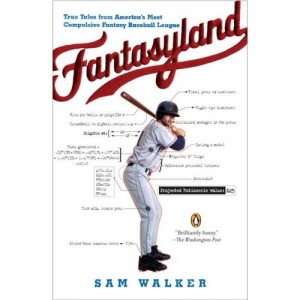 Spring is in the air and so sports fans everywhere are turning their minds to the Boys of Summer, to baseball.
Spring is in the air and so sports fans everywhere are turning their minds to the Boys of Summer, to baseball.
Unfortunately, the Toronto Blue Jays appear to be on the verge of another frustrating season. So I’m focusing on fantasy baseball.
Sure, I still have a seasons pass to all the Jays’ games, but it’s more satisfying to root for teams that I have some measure of control over, teams that won’t have to shed salary or ever let go of Roy Halladay.
Come late August some of my teams should be vying for a playoff spot. I can’t say the same for Toronto.
And I’ve got a lot of opportunities for championships as well – I’m now the commissioner of three leagues, with teams in another three pools.
The breadth and depth of my 2010 fantasy baseball experience will be pretty wide too. I’m in rotisserie leagues, a keeper league, an auction-style draft, an auto-draft as well as some good old fashioned head-to-head scoring.
For anyone who has never participated in fantasy baseball, I highly recommend Sam Walker’s Fantasyland. It’s an excellent introduction to the history and characters of the non-sport.
Walker is the senior special writer and sports columnist for the Wall Street Journal. He decided to give fantasy baseball a try after getting burnt out by the constant allegations of steroid use and exponential growth of salaries in the real-life game.
Taking a sabbatical from his day job, Walker put together a small front office comprised of a NASA statician, a head scout and an astrologer, all in an attempt to best the cream of the fantasy crop in the Tout Wars – a league for the experts who write the websites, magazines and books that the average fan consults.
Spending thousands of dollars on his staff, flights to the Grapefruit League and consulting with the actual players on his team, Walker guides the reader through the world of fantasy baseball.
It’s a really humorous and informative read as Walker takes an unorthodox approach to rekindling his love for America’s pastime.
I’m not as wary of baseball as Walker was, and I’ll never put that much into my fantasy teams. However, I am frustrated with some aspects of baseball, particularly the struggles of my local squad.
Fantasy baseball gives me a forum to follow other corners of Major League Baseball and channel some of my fandom into more fruitful avenues.
For the next two days I’ll be going over fantasy baseball kits and magazines and running mock drafts to try and get a feel for which players I should be taking and when. I’ll be putting together crib sheets and analyzing my opponent’s tendencies.
Opening Day is all about a renewed sense of hope, as all teams start on an equal footing. This year, however, I’ve got seven teams to follow, not just one.
Graphic Novel Review – Satchel Paige: Striking Out Jim Crow by James Sturm and Rich Tommaso
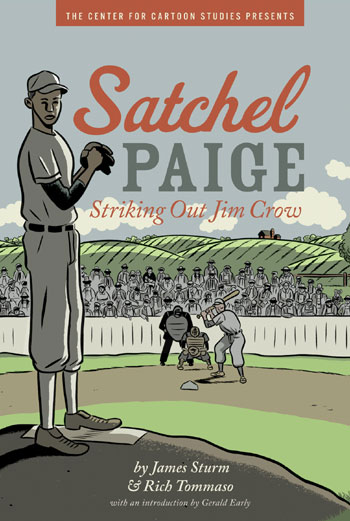 I was wandering through my local library when I saw the name “Satchel Paige” on the spine of a graphic novel and was immediately intrigued. The legendary pitcher has always interested me and I wanted to learn more. Even though it was written for young adults I borrowed it, figuring it was worth a look.
I was wandering through my local library when I saw the name “Satchel Paige” on the spine of a graphic novel and was immediately intrigued. The legendary pitcher has always interested me and I wanted to learn more. Even though it was written for young adults I borrowed it, figuring it was worth a look.
It turns out that I’d picked a fantastic piece of work by independent comic stars James Sturm and Rich Tommaso. In their hands the plight of African American sharecroppers in the Jim Crow south and the magic of Satchel Paige comes to life.
If you’re not familiar with Paige, then you’re missing out on a nearly mythical figure in American history.
Argued by some as the greatest pitcher of all time, Paige claimed that he had pitched in 2,500 games and won 80% of them. Of course, his claims can’t be verified since, as an African American, he couldn’t play in the major leagues until Jackie Robinson had broken the colour barriers, and Paige was in his 40s. Baseball historians have since confirmed that he won at least 291 games between various leagues across the United States and Carribbean.
Tomasso uses sepia tones picked out with heavy black ink to render the tale of Emmet Wilson, his son Emmet Jr. and, of course, the legendary Paige. His style is reminiscent of children’s illustrators of the 40s and 50s like H.A. Rey of Curious George fame or Ezra Jack Keats’ Snowy Day.
Relying on a straight forward six panel frame for most of his pages, Tomasso’s art is well-paced. In particular, the baseball games are very exciting and are a nice mix of extreme close-ups, expansive double-wide panels and reaction shots. (Click here to read the first ten pages online)
At first, Tommaso’s plain, two-toned artwork seems too simple for the subject matter. However, he handles graphic images like the lynching of a sharecropper with great sensitivity. Tomasso deservedly won an Eisner Award in 2008 for his work on the book.
Sturm’s script draws the reader in and creates a real sense of tension, particularly surrounding the menacing Jennings twins who seem capable of anything.
He also does a good job of differentiating between the latent racism of Southern society represented by segregated baseball fields or the paternalistic Mr. Jennings and the blatant hatred of his twin boys who engage in violent hate crimes.
Most impressively, Sturm handles the enigmatic Paige with a rare touch that maintains his mystique while making him into an early champion of racial toleration. The penultimate scene where Paige faces down the bigotry of the Jennings brothers is a slow, simmering burn that the reader can savour.
The Center for Cartoon Studies commissioned this book, and they deserve full credit for putting together a wonderful package that includes online resources like samples of Tomasso’s draft work and other tools for teachers. Of course, they also put the Sturm-Tomasso tandem together which is what makes the book great.
Although geared towards adolescents, Satchel Paige: Striking Out Jim Crow is an enjoyable, light read that doesn’t shy away from some tough subjects. Sturm and Tommaso are deft storytellers that express a myriad of emotions with minimal words and art.

